Package Racer
Photos by Drew Ruiz and Jimmy Lewis
Honda Press and Marketing always come up with a slogan for a new model. This CRF450R in 2021 was evolved from the design philosophy of “Razor Sharp Cornering” which comes on the tail of the “Absolute Holeshot” that was pulled in 2017. Sometimes these slogans are derived from targets set for development. Sometimes they are intended as mind-bending influence meant for Moto Journalists seeking story lines. At Dirt Bike Test we treat the claim as just that, but dig deeper to do our best to get past the hype and describe the bike.
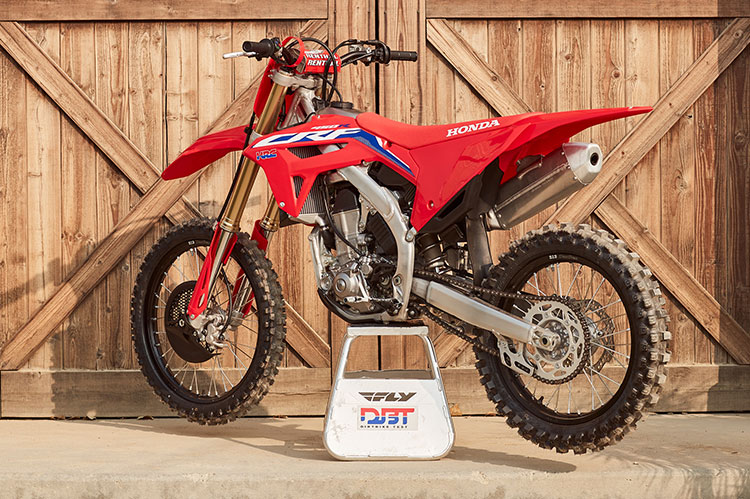
For 2021 the CRF450R is one of the most anticipated and hyped bikes. Its predecessors were good machines, but more polar than CRF’s had been in a while. Honda went on a power bender with an aggressive nature in the chassis. A path that felt like the power, suspension and handling departments had limited communication, each throwing the maximum into the design that in some ways fought each other. At the time we liked the rush and the feel, Maybe we got carried away? Well 2021 is a different story.
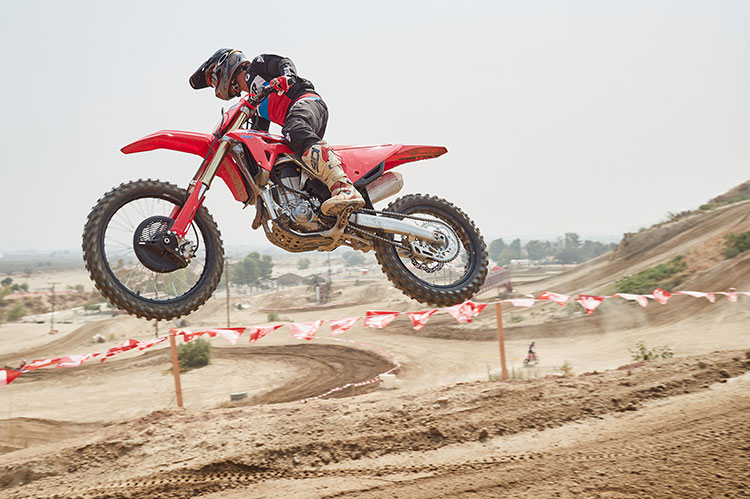
We described the major changes to the 2021 model here: https://dirtbiketest.com/fresh-dirt/2021-honda-crfs-with-all-new-450r-rx-rwe/
So straight to the track and here is what stood out about the 2021 CRF450R in the order we noticed characteristics of the CRF.
-The bike is lighter, on the scale by a claimed three pounds (244 vs. 247) but riding it you’d swear it was ten. (More on that later.)
-The hydraulic clutch is good. The feel is more precise and the pull is smoother and takes less effort. Time will tell if additional durability comes along for the ride.

-Power delivery is smoother but the bike is faster. With a less brutal nature everywhere and less surges in delivery (we explain in detail in our Dirt Bike Test Podcast) The bike is more rider friendly on the track. It will not impress you in the parking lot as much as the older CRFs but it will let you get on the power sooner and without having to back out as much or as often as the old motor due to wheel spin or wheel lofting. When you hear factory riders talking about their bikes getting better power delivery, this is the delivery style they have been looking for.
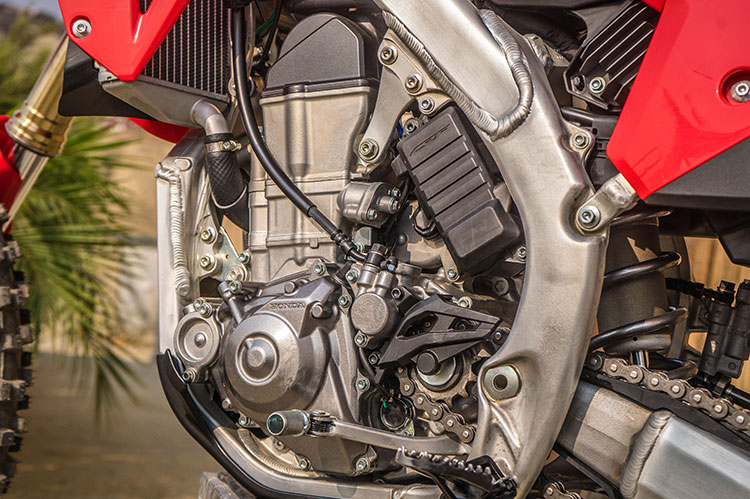
-The Showa suspension worked a lot like the KYB suspension so many rave about. The longer fork and softer rear shock now have a plushness that isn’t common for Showa components and was never very possible to get in the past. Some credit definitely falls on the chassis but it goes deeper. The daming through the stroke has a more free movement yet still the high-level of control typical to the Showa components. Bottoming resistance is still class leading in our opinion. We ran 107mm of rear sag, had a 200-pound and a 160-pound test riders both get correct ride height and come away happy (though it was suggested riders in the 200+ range should really look at the Honda Optional heavy spring since it is specific to this bike and differs from the Showa spring of the same rating, in length.) Our lighter rider stiffened the compression on the fork one click and that was the only suspension change we made.
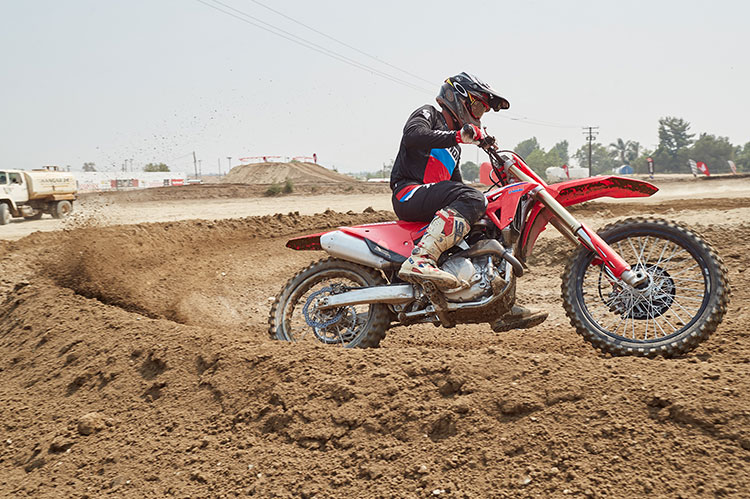
-The chassis has less rigidity to take some of the sharpness out of the bumps you feel but in no way does it seem to hamper the precision of the turning at any point in the turn, especially the turn entrances where the Honda has always been a standout. Now if anything the bike likes to stay in the ruts easier, lets a rider have more feel if the bike is going to slide or break loose. When it does the CRF grabs traction back more effortlessly, responding to the rider input. The handlebar weight feel is the same as the older bike, which is light, but the improved feel of lightless through the footpegs stands out. It is the feeling when a rider is whipping or throwing the bike sideways in the air or turning the bike with weight while the front end is off the ground where the bike shines brighter. The power and suspension characters play into this and cooperate into this improved feel. Another way to describe the sensation is better traction–this coming from two test riders who are not fans for the Dunlop MX33F front tire.
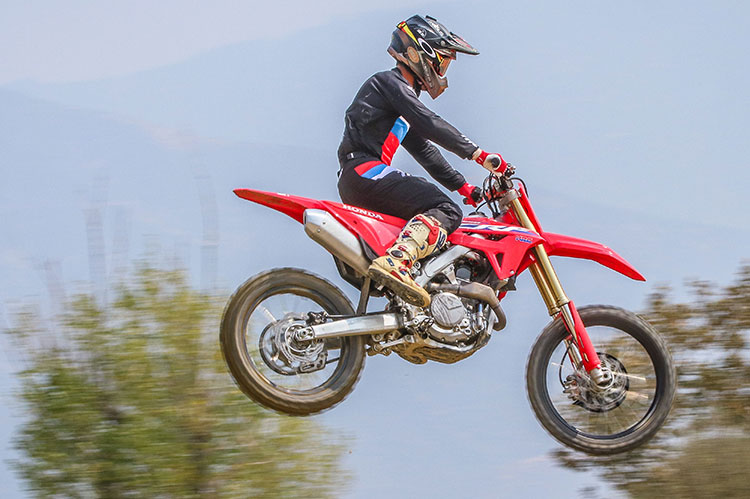
-Our bike and a few others from what we gathered had a noticeable hiccup or miss at low RPM with a load on the motor. It happens when you are riding a gear tall through the turn and you begin to come on the gas. It did not cause the bike to stall but was annoying and we inquired if this was a known issue. Honda was aware of it and the quick, band-aid fix is to turn the idle up. We are looking at ways to tune this out with the HRC Mapping tool. We will dig into this and get any updates as we learn about them.
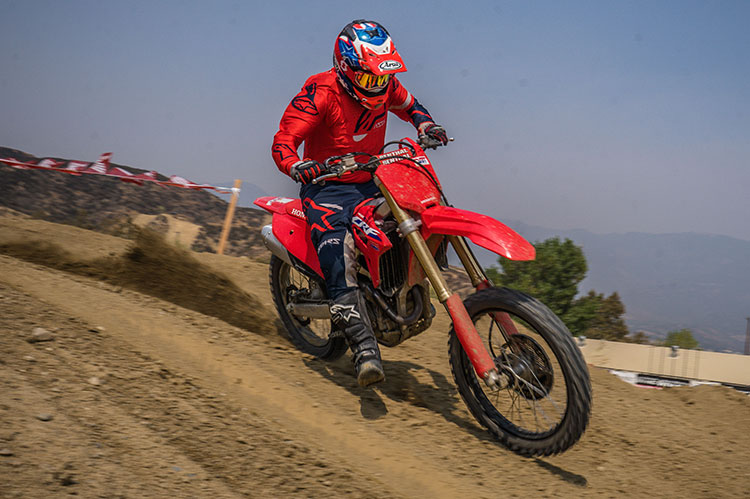
-Thought simplified the handlebar-mounted buttons and the operation of the three different ignition maps, three different Torque Control (traction control) settings and three different Launch Control settings will take a rider a bit of learning. But what we hate above all is the fact that the maps can not be switched on the fly (or at least effectively as you have to be at 0% throttle and idle RPM for the 2-3 second hold). The traction control requires the same 2-3 second hold to be turned on or off but was switchable on the fly from what we could tell. Yet our riders did not care for the effectiveness of the Torque Control which felt as if it was only working at lower throttle openings and lower RPMs. We were told it is effective from 3000-10400 RPM by retarding the ignition timing. Both of our test riders are of higher skill level and agreed they would like to see be more prevalent later in the power delivery–yet for a lesser skilled rider the current configuration may be sufficient, especially in mud. On our first day on the bike we did not have time to adequately test the launch control.
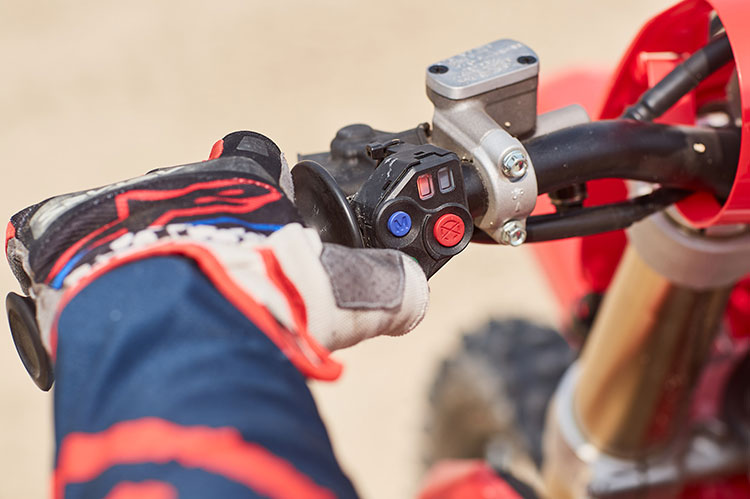
-Honda also made a point to emphasize that the new bike is slimmer. The good news here is that it did not go too thin. There is still plenty to hang on to but less to get in the way, especially moving back on the bike where the bulge is minimized, especially for taller riders. The seat has noticeably less padding or cushion if that is something you notice and overall aids in keeping a flat profile that is easy to move around on as opposed to getting stuck in a pocket. The seats had noticeable grip built into the cover.
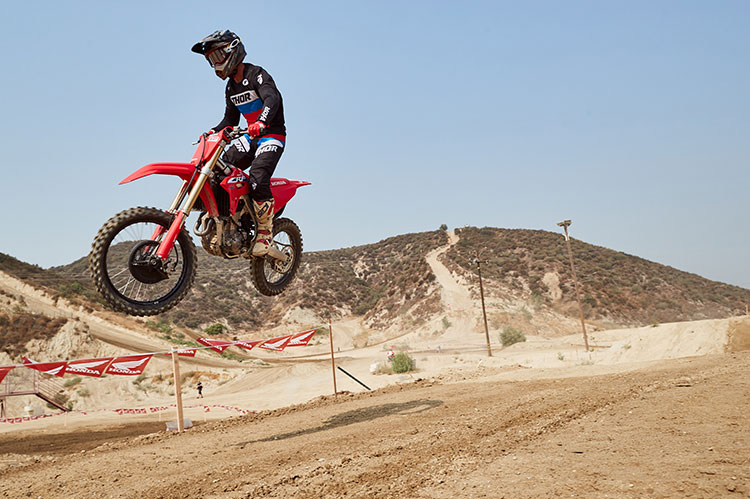
-Wide-open power shifts with no clutch were magical on our test bike, something that we do not recall in the past on CRFs. Shirting overall was excellent and the gear ratios were right where they need to be for most motocross conditions.
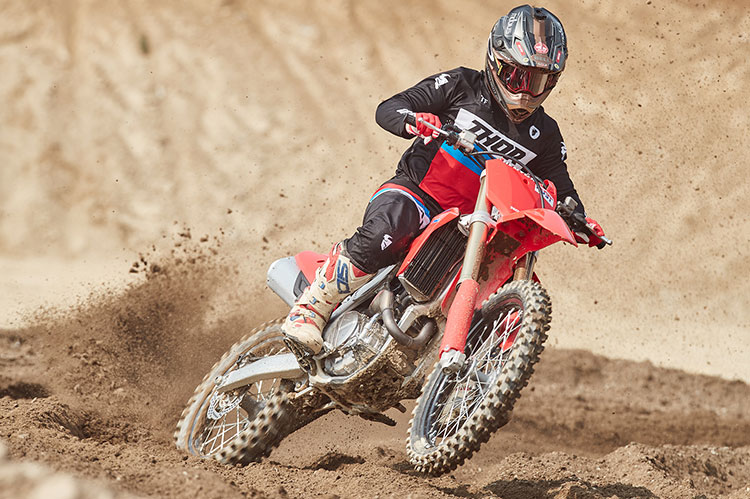
-When sampling the different power delivery maps our heavier rider preferred the aggressive (#3) map while our lighter rider was plenty happy with standard (#1.) That said when in the aggressive map we were riding a gear high in the turns in turn using the load on the motor to mellow the power and the added pull to pull the load. Yet if you like to rev the bike more or are lighter, the #1 map has all the gusto you’ll need. The #2 mellow map was less responsive and muted the power enough to be annoying at Glen Helen, especially in the deeper sand or on the hills.
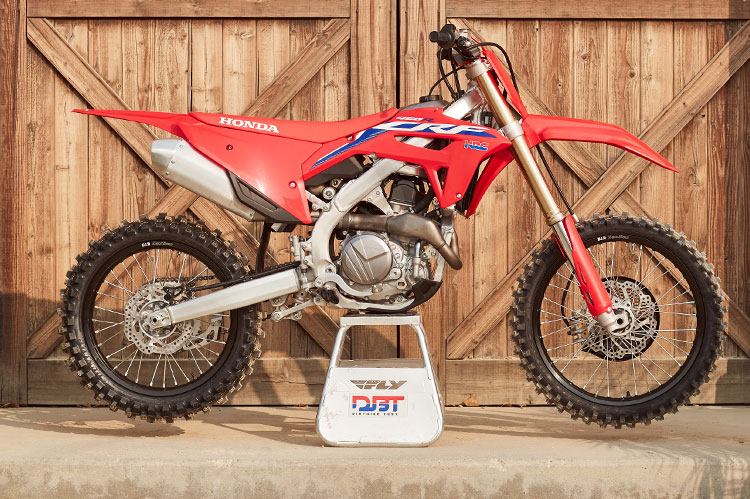
-Brakes were average, which in this day and age means excellent.
-The CRF sounds good and healthy without being raspy or too loud. The muffler looks large from certain angles but compact from others. The bike was quieter to the rider than the previous model.
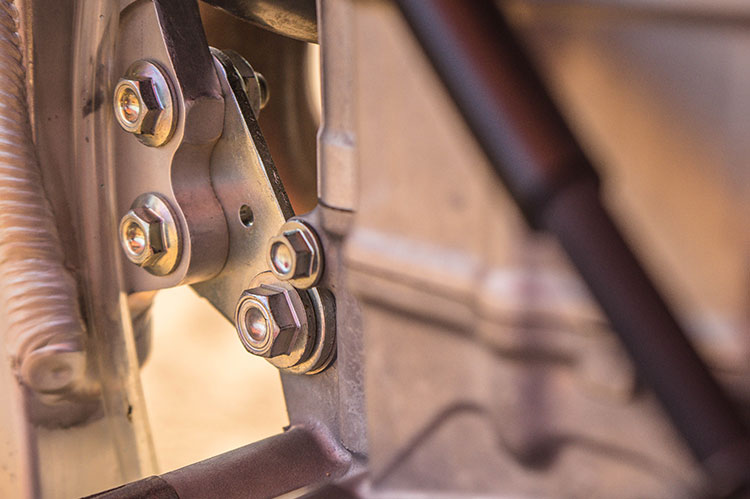
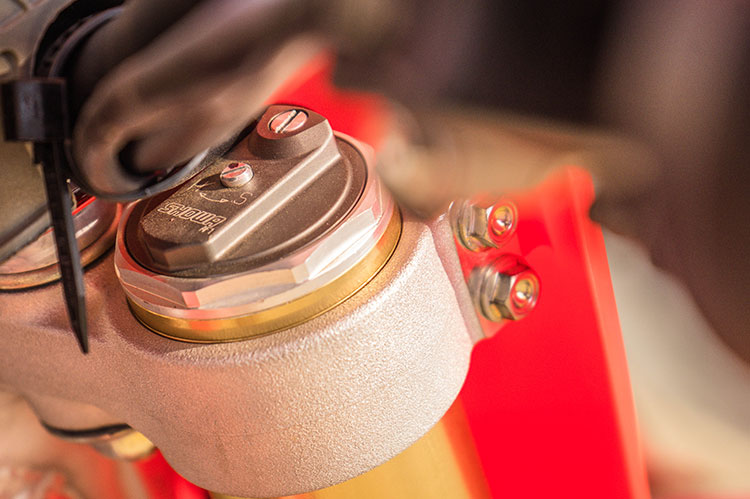
Overall we are very impressed with the new CRF450R. It converted one rider who was actually scared of the 2020 CRF450R last year to literally saying it was the best 450 he has ever ridden. The other, typically a Honda fan but not as much lately feels the bike is back where it should be. More friendly for everyone without giving up an edge in performance, at least for 99% of us. Dial in a few kinks and this bike is going to sway some opinions.
Want to see what Honda has to say about it’s bike? https://powersports.honda.com/off-road/competition/crf450r/specifications?year=2021
Support DBT by shopping through the links below:

